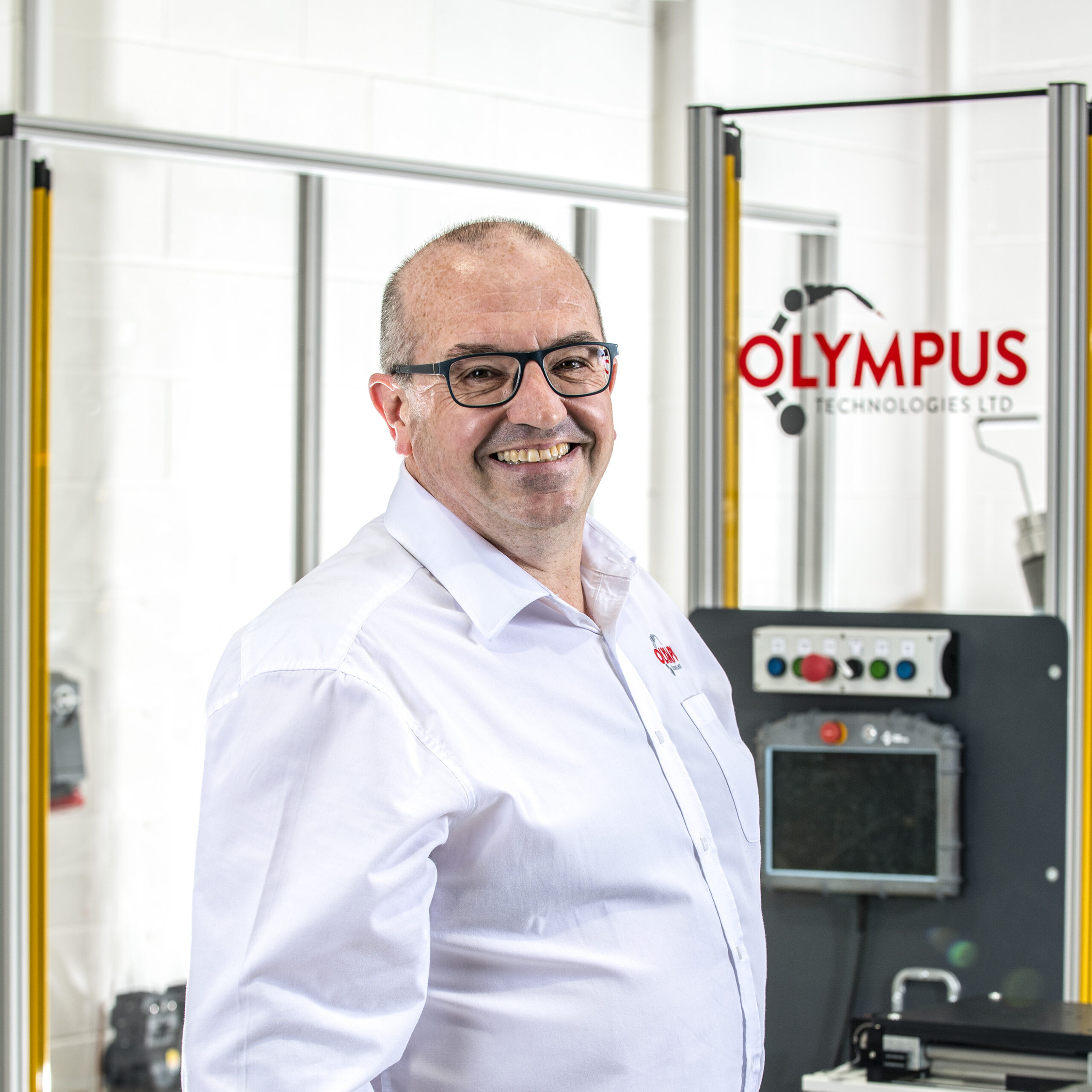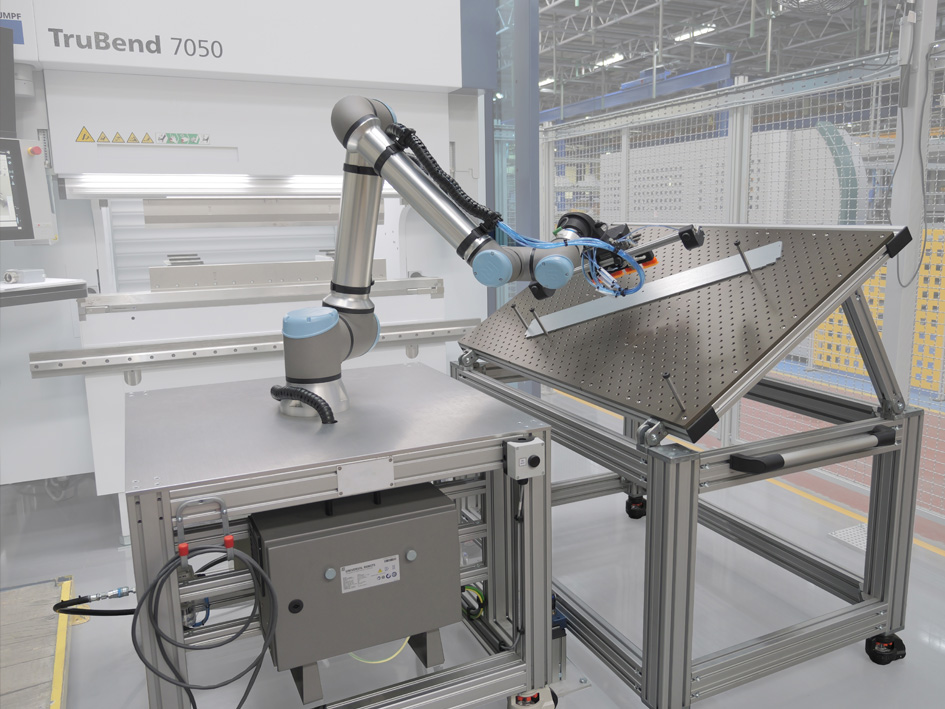Cobot palletising uses collaborative robots to pick a case or product and place it on a pallet in a controlled pattern so you build stable pallet loads safely.
Compared with traditional palletisers, it offers easy programming, faster changeover, and a smaller footprint. It is a versatile solution for packaging where product variety is high and the line must keep moving without a full rebuild.
Core kit includes a Universal Robots arm, the UR controller, a gripper sized to the case width and weight, and a safety strategy built with scanners or light curtains.
The palletising cell sits at the end of the line, receives cases in order, builds layers, and signals when a pallet is complete and ready to remove. For options and layouts, see Cobot Palletising Solutions.
Is It Right For Your Line
Fit the application by throughput, SKU variety, shift pattern, and available area. Cobot palletising shines when production is variable, patterns change often, and projects must get started in weeks rather than months.
It often beats conventional or gantry palletisers where space is tight inside existing buildings, changeovers are frequent, and you need a safe way for humans to work near the cell. Sector snapshots include food and drink, pharma, FMCG, and 3PL or e-commerce.
Benefits That Matter
Flexibility is the headline advantage. Select a new pattern, choose the next SKU, and run with minimal setup time. Collaborative modes plus light curtains and clear guarding improve safety while keeping the operation efficient.
Total cost of ownership is lower than many fixed systems, so payback is quicker, and the robot will deliver consistent results around the clock with minimal supervision. You achieve stability in the stack, reduce handling damage, and improve overall line efficiency.
How It Works At A Glance
The principle is simple. Pick, place, manage interlayers, build the pattern, exchange the pallet, continue the cycle. Cycle time is driven by reach, payload, grip type, path length, and short dwells at each place position.
Helpful add ons include vision for orientation check, slip sheet or interlayer magazines to fill between layers, and column lifts when the stack height is beyond arm reach.
Choosing The Right Package
Hardware: choose the Universal Robots model for reach and payload, a gripper that matches case size and grip points, and column lifts if pallet height or number of layers exceeds the safe working envelope. Conveyors and simple sensors help the process confirm flow and position.
Software: a URCap pattern builder on the UR controller keeps programming user friendly. Put your most used commands in the top right corner, organise the HMI with clear tabs, and store each pattern as a named program file so operators can open, review contents, and understand parameters at a glance. Pattern libraries can be grouped by product series, case type, or customer order to make selection faster.
Safety: complete a risk assessment to ensure the chosen strategy matches the speed and separation you need. Decide whether the application runs collaborative or fenced, then integrate scanners or light curtains and interlocked doors as required.
Upstream And Downstream Integration
Cobot palletising integrates cleanly with adjacent tasks to enable a complete end of line solution.
- Case orientation and stable layers upstream, see Case Packing.
- Bead control or sealing before case close, see Dispensing and Sealing.
- Part flow that finishes with a pallet, see Machine Tending.
Implementation In Three Simple Steps
Survey and layout: confirm infeed and outfeed height, pallet zones, and services for power, air, and network. Mark the work area and ensure a safe operator route.
Integration and test: install the hardware, map fieldbus or I O, set pattern parameters, and run FAT and SAT to prove the process in real time.
Training and handover: teach operator tasks, changeover routines, and basic maintenance so the team can run the cell confidently from day one.
Performance And ROI
Track cases per minute, uptime, OEE, MTBF and MTTR. Quick wins come from path optimisation, verifying grip force, and tuning acceleration limits. Payback modelling should include labour redeployment and reduced damage. Even small efficiency gains make a significant difference over large numbers of pallets and months of operation.
Limits And Mitigations
Tall stacks and reach limits are managed with a column lift. Heavy or unstable packs are handled with custom grippers, dual pick strategies, slower approach speeds, and verified stopping distances. Harsh environments call for IP rated components and enclosed controllers so the application stays safe and keeps running.
Snapshot Comparison
| Technology | Typical Speed | Footprint | Flexibility | Safety | Capex | Best For |
|---|---|---|---|---|---|---|
| Cobot palletising | 2 to 12 cases per min | Small | High | Collaborative with light curtains | Lower | Mixed SKUs, frequent changeover |
| Traditional palletiser | 10 to 40 plus | Medium to large | Lower | Fenced | Higher | Single SKU, steady high volume |
Quick Spec Checklist
Throughput target, pallet height, patterns, SKUs
Case dimensions and weights, packaging type, grip points, pallet size
Compliance needs and documentation, including the safety file and maintenance records
Practical HMI Tips
Inside the pattern editor, set pick and place points, check direction arrows, and verify the layer order before you hit run. Keep commands and tabs consistent across programs. Use clear labels, keep the most important controls at the top right corner, and standardise the way operators select, start, and stop a cycle. If the cell stops mid cycle, review alarms, remove any obstruction, ensure the pallet is seated, then select resume.
Next Step
Explore configurations, site surveys, and demos on the Cobot Palletising page. We will help you create the right program, choose the correct package, and install a solution that integrates with your line, improves efficiency, and delivers results that matter to production.














